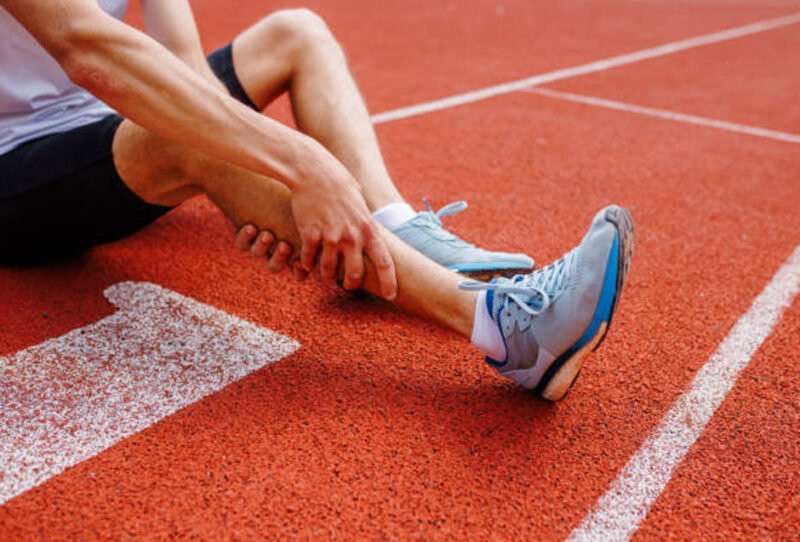Sports injuries can impede both performance and daily mobility. They can restrict flexibility and delay healing from muscle stiffness to sudden sprains. Many athletes look for tried-and-true, natural methods of healing devoid of excessive reliance on drugs. Osteopathy here becomes helpful. Osteopaths employ manual methods that hasten healing, restore balance, and boost blood flow. Many athletes today employ this organic approach for both prevention and therapy. Finding the appropriate support is important if you live in the UK. An osteopath Dover helps strengthen the body and reduce pain. Athletes heal quicker, avoid future injuries, and return to top performance with assurance when given the right care.
Understanding Sports Injuries
Sports injuries arise when ligaments, joints, or muscles experience abrupt strain. Common injuries include joint stiffness, tendonitis, back pain, and sprains. Long-term problems can also result from overworking or a bad attitude. Many times, athletes neglect early signals, therefore aggravating the issue. Chronic diseases could come from disregarding minor aches. Early on, osteopaths recognise these issues. They evaluate joint motion, muscular balance, and posture. This helps locate the underlying cause, not only the apparent pain. Osteopathic therapy avoids repetitive injuries by fixing root causes.
Osteopathy’s Role in Pain Management
Osteopathy relieves discomfort using mild manual methods. Common approaches include joint manipulation, massage, and stretching. These methods improve blood flow and help to lessen muscular tension. Better blood flow quickens the damaged region’s healing. Restricted motion sometimes causes pain. Osteopaths lessen pressure on joints and nerves by correcting alignment. This organic strategy enables athletes to prevent protracted painkiller dependence. Additionally, it makes recovery safer and healthier. Many athletes say that following therapy, their flexibility improves and stiffness decreases.
Accelerating Recovery
Recovery time is vital for all athletes. Osteopathic treatments aim mostly to quicken healing. They foster improved tissue oxygen supply. Moreover, reducing inflammation around the damaged region is one of their effects. Faster healing lets athletes get back to practice sooner. Osteopaths also help patients with appropriate workout plans while they recover. These customised activities help to strengthen weak muscles and avoid additional stress. Athletes recover faster and get confidence in their performance using this integrated approach.
Prevention of Future Injuries
Osteopathy aims at much more than just treating present pain. Moreover, it acts as a preventive care strategy. Osteopaths assist athletes in learning about their body mechanics. They help one to correct bad posture and provide advice on how to prevent repetitive strain. Regular therapy helps joints stay stable and muscles flexible, therefore reducing the likelihood of repeated injuries. Athletes who keep body balance and mobility perform better and remain active longer. Prevention is very important for sports performance. Osteopathy lets them attain this harmony naturally.
Enhancing Athletic Performance
To excel, athletes have to have endurance, flexibility, and strength. Osteopathy strengthens every one of them. It enhances muscular function and joint movement. This lets athletes have more control and better motion. Good circulation keeps muscles active for a longer time. Osteopaths also relieve tension from overworked muscles. This helps to avoid weariness during competition and practice. Improved posture, alignment, and balance help to improve general performance. Osteopathic treatment has found a place in the training regimen of many professional athletes. It promotes mental confidence as well as physical well-being.
An Integrated rRecovery Process
Osteopathy emphasises the body in general. It repairs overall body balance, not just the damage. Recovery is also influenced by stress, poor sleep, and lifestyle choices. Osteopaths, during therapy, take care of these considerations. They advise patients on posture correction, nutrition, and rest. This all-encompassing strategy supports both healing and ongoing health. Athletes have more than just pain relief to gain from. They grow stronger, tougher bodies as well. A whole recovery plan guarantees fewer setbacks and long-lasting outcomes.
Conclusion
Though sports injuries are frequent, healing does not always call for major surgery or medicine. Osteopathic therapies offer effective, natural, and safe care. They prevent future injuries, hasten healing, and lessen pain. Osteopathy increases athletic performance by enhancing balance, flexibility, and strength. Moreover, it aids the body’s inherent healing ability. Athletes who opt for osteopathy find both immediate comfort and long-term advantages. This whole approach lets them remain active, perform better, and heal quickly following injuries.









